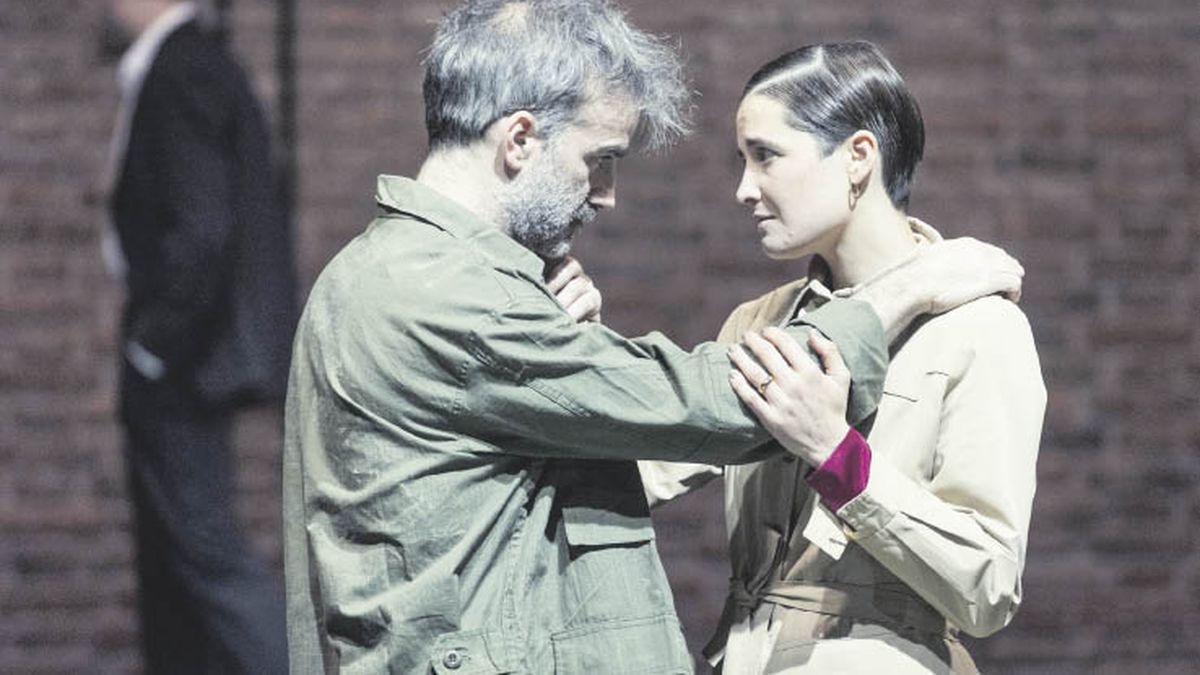This is one of the aspects that Halac privileges: in several scenes, the very Hall of the San Martín Theater is reproduced abysmally, in a mirror, in the same way as Jessica’s wardrobe, Hugo’s wife, is transported in boxes in which it clearly reads “Dirty hands – Teatro San Martín”. It is a representation of actors who are representing characters who, in turn, maintain that they are characters in a political gear that can change radically due to circumstances, and that whoever is a traitor today may tomorrow be a hero who is erect statues in parks and walkways.
The work, therefore, deals with the theme of the traitor and the hero, synthesized in the person of Hoederer, the Party’s hierarch, Hugo’s counterpart, the bourgeois anarchist, pure, with always clean hands, incapable of understanding the machinery, and to whom Hoederer’s internal enemies, like Benjamín Otálora in Borges’s “The Dead”, were already considered dead before entrusting him with the mission of killing him. “Otálora does not know which side reason is on, but the pure taste of danger attracts him,” Borges writes, and the same thing happens with Sartre’s Hugo Barine: he infiltrates Hoederer’s residence, where he is going to work as his secretary, and he carries with him a revolver and a warrant. He has been told that Hoederer betrayed the party because he intends to form an alliance with the Group of Five, liberal bourgeoisie, and with the Regent’s son (the action takes place in the imaginary country of Illyria). But that “direct action” never comes. What if Hoederer was right? Avoiding that circumstantial alliance, he explains, now that the Nazis are losing the war, could lead to a ferocious massacre of the Red Army, and the Party has few adherents even among the peasants. Hoederer’s lucidity strikes Hugo’s conscience, but the clock is ticking against him: those who sent him already consider him a traitor, and he wants to be a hero.
Halac has taken advantage of the huge stage of the Casacuberta room (he uses, functionally, the cantilevered proscenium to establish Hoederer’s office there), and the set design by Micaela Sleigh, also responsible for the costumes, provides sometimes ghostly backgrounds that are combined with the aforementioned reproduction of the theater hall. The original structure of the work, in seven frames, recognizes a cinematographic profile since the first and last frames correspond to the present, and from the second to the sixth the flashbacks with what happened before. The passage of time between one instance and another allows for two different actors to play the role of Hugo: Guido Botto Fiora, the one from the past (and the most brilliant), and León Ramiro Delgado, the current one. Daniel Hendler, as Hoederer, takes the praise (favored by the richness of the role). Jessica by Flor Torrente and Olga by María Zubiri are good, as are Karsky by Guillermo Aragonés and Príncipe by Juan Pablo Galimberti. The music, suggestive, ominous at times, by Gustavo García Mendy, gives the staging a touch of luxury.
Dirty Hands by Jean Paul Sartre. Dir.: E. Halac. Int.: D, Hendler, G. Botto Fiora, F. Torrente (San Martín Theatre, Casacuberta Hall).
Source: Ambito
David William is a talented author who has made a name for himself in the world of writing. He is a professional author who writes on a wide range of topics, from general interest to opinion news. David is currently working as a writer at 24 hours worlds where he brings his unique perspective and in-depth research to his articles, making them both informative and engaging.




